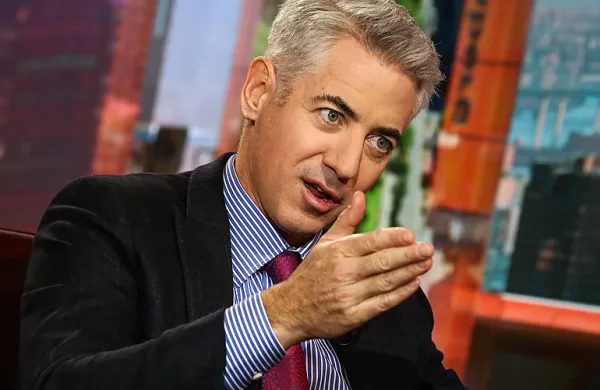Hedge fund replication — which can be thought of as a slightly more complicated version of a stock index fund — just got a big boost from a small fund.
A $535 million European multi-strategy UCITS fund — the equivalent of a mutual fund in the U.S. — clocked in with the best risk-adjusted returns of any of its peers since its inception in 2015, according to data from the AbsoluteHedge database. The SEI Investments fund, whose hedge fund replication strategy is overseen by subadvisor Dynamic Beta, is the closest that mainstream and even most institutional investors can get to rarified hedge funds — but with the added benefits of low fees and the option to redeem their shares at any time.
The SEI fund has achieved what competing UCITS funds from AQR, Blackstone, and K2, now owned by Franklin Templeton, to name just a few, have failed to do: deliver absolute returns to investors that are generally locked out of the best hedge funds, which do more than offer prestige: they can deliver steady returns, while also protecting portfolios from at least some of the carnage during declining markets.
Investors may not have heard of the managers of this fund: SEI is a large but quiet firm based in Pennsylvania, and $1.1 billion-in-assets Dynamic Beta was founded by Andrew Beer, who started his career working for legendary manager Seth Klarman. SEI was willing to take a flyer on Dynamic Beta in 2015 and hired the firm as a sub-advisor. Like a family office sometimes does, SEI incubated the strategy in the best conditions — for its own clients — before offering it to outsiders.
The fund is in an investment category called liquid alternative funds, which have been billed as hedge funds for the masses. (Technically, it’s the multi-strategy UCITS hedge fund products category). But they haven’t lived up to their marketing hype. The SEI fund succeeded by sticking to a very simple approach of replicating the returns of a pool of 70 hedge funds. It also kept the bar deliberately low, arguing that it only needed to deliver 90 percent of the returns of a pool of hedge funds — while keeping fees low — to outperform everybody. It worked. The fund beat the biggest brand names in the category.
“There has been a parade of UCITS products — multi-asset, funds of funds, multi-manager, alternative risk premia, single manager products — that were sold with great fanfare and delivered depressingly poor results. And here is a fund sold with no fanfare that just gets the job done,” said Beer, managing member of Dynamic Beta, which has since launched similar funds, including a managed futures exchange-traded fund. iMGlobal, which invests in active managers, bought a minority stake in the firm in 2018.
The SEI fund has beaten its formidable peers. To account for different inception dates, the time period analyzed is between February 29, 2016 and June 30, 2022. The AQR Style Premia UCITs fund lost 1.47 percent annualized during the time period. The fund experienced a 40 percent drawdown in 2018 and big gains in both 2019 and 2020. The Blackstone Diversified Multi-Strategy UCITs fund, designed to give investors exposure to hedge funds, returned less than 1 percent per annum since inception in 2014 and June 30; it gained 1.19 percent annualized between February 29, 2016 and the end of June. BlackRock’s Style Advantage Fund, a risk premia UCITs fund launched in early 2016, lost 1.89 percent annualized between February 29, 2016 and June 30. K2’s Alternative Strategies Fund, which dates back to 2016, did a little better, delivering almost 3 percent per annum for the period. In contrast, the SEI fund delivered 6.5 percent on an annualized basis. The HFRI Global Hedge Fund index, which is a benchmark that includes UCITS hedge fund products, returned 5.88 percent on an annualized basis during the time period.
Dynamic Beta’s methodology for hedge fund replication uses an extension of returns-based style analysis developed by Bill Sharpe decades ago.
“The only way we’ve found to consistently outperform in hedge fund land is to cut out fees and expenses to get more of the alpha back into the hands of clients,” said Beer. That’s what the biggest institutional investors that have historically done well in hedge funds did. “They went to the best managers and said we’ll invest our billions with you, but don’t even think about charging us 2 and 20 for that. You’ll get long-term capital, and you’ll gather assets from others once they find out we’re invested with you,” he said.
The SEI portfolio was up 2.3 percent year to date through June 30 net of sub-advisory fees — that’s slightly behind the traditional hedge funds it seeks to mimic, which the manager expects, but more than 7 percent ahead of the HFRI Global Hedge Fund Index. While the hedge funds the SEI fund targets returned 3.9 percent year-to-date, they also had a larger drawdown since inception of 8.3 percent (the SEI fund had a -7.4 percent max drawdown since inception.)
The SEI fund outperformed because of the manager’s asset allocation decisions in total, not the specific trades. The SEI fund, which does not have specific position information, was overweight (40 percent) in managed futures during the most recent reporting period, one of the best performing strategies this year.
In a market hit hard by inflation and the possibility of a looming recession, investors are eager for alternatives. Since inception, the SEI fund has delivered more than two-thirds of the returns of stocks “with roughly one-third the drawdown, and over 500 basis points per annum more than bonds with 40 percent of the drawdown,” according to the second-quarter report from Dynamic Beta.
“Fee disintermediation can be a very powerful tool. In the first six or so years of the fund, we replicated over 90 percent of the pre-fee returns of 70 leading hedge funds. By charging less, we materially outperformed during a period of modest returns: A pick-up of 200 bps per annum matters a great deal when other investors are earning 3 to 4 percent,” Beer wrote in his most recent letter to shareholders. “Further, it helped to “solve” the low-return-while-you-wait paradox of managed futures: while the SocGen CTA index returned 1.5 percent net per annum, our pre-fee replication returned 5.3 percent net. Higher expected returns meant we were “paid to wait” and made it possible to raise the managed futures allocation to 4x what you might see in a typical diversified hedge fund portfolio (40 percent versus 10 percent). In 2022, this “hedge” kicked in to deliver crisis alpha: 40 percent of the portfolio rose 13 percent and lifted performance from a 4 to 5 percent loss to a gain of 2 to 3 percent (or 4 to 6 percent annualized),” he said.
Although the fund is relatively small, its success matters. It could kick off a flurry of similar products, challenging the hedge fund industry’s fee structure, lack of access, transparency, and wishful thinking about outperformance. Investor demand for alternatives is only increasing, but the fees and liquidity are still a challenge. Even Vanguard has gotten into the game. It is now offering private equity through HarbourVest Partners, and investors are closely watching what other alternatives it could offer in the future.
Hedge fund replication and the idea behind it, in some ways, isn’t new. Managers generally outperform, not with successful individual stock bets, but by getting the larger decisions correct.
Beer said, “There’s a tension in hedge funds: what they really are versus what people wish they would be. When you talk to an allocator, the ideal manager has no correlation to anything. It’s Seth Klarman finding some peculiar investment that no one other than a sheer genius value investor could ever be able to uncover. But that’s the myth of absolute returns — the myth that there is some manager out there who just does 6 or 7 or 8 percent a year and never blows up. There are firms that have gotten damn close, like Millennium,” but few investors, including premier institutions can get access to these funds. “I say, if you can do millennium, do millennium!” he said. For most investors, hedge fund replication is more realistic.







